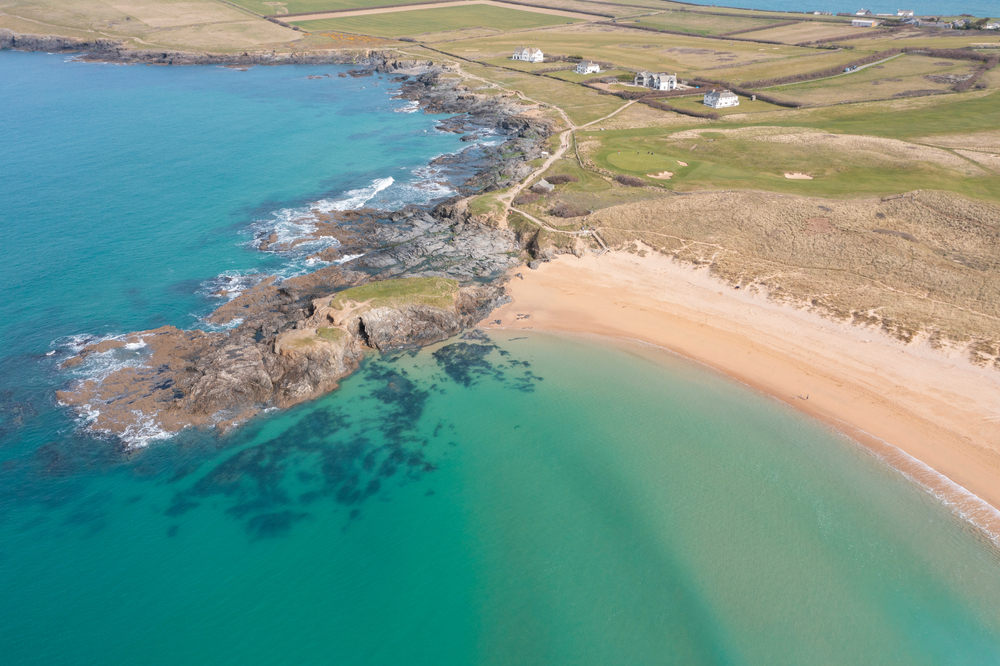Constantine Bay is a wide sweep of coast about four miles west of Padstow on the wild Atlantic coast. It is named after a 6th century Cornish saint, St Constantine, whose ruined chapel and Holy Well can be found snuggled amongst the Greens of the modern golf course.
Often windswept, the miles of sandy beaches here are popular with surfers and the coastal paths offers panoramic views of the jutting fingers of the north coast’s headlands, stretching off into the distance.
The bay is bound on one side by the dramatic promontory of Trevose Head, where a lighthouse was built in 1846 after years of petitioning from local residents, who had seen first-hand the destructive power of this violent piece of coastline. A sharp reef of rocks close to Booby’s Bay was a particular hazard to shipping, although folktale and rumour would blame another culprit.
The Cornish Wrecker
The image of the Cornish wrecker standing on a lofty clifftop on a dark and dangerous night, waving a lantern into the gale to attract some imperilled sailing ship to its doom is a famous one. But the fact is this is unlikely to have ever happened, these sinister characters were more the invention of Victorian writers and then later Daphne du Maurier. For a start, any light from a lantern would have served much like a lighthouse, warning a ship to keep its distance, not luring it onto the rocks!
Wreckers however, if we understand the real meaning of the word, did exist.
Wrecking in Cornwall was the act of gathering up the bounty that the sea brings you on the tide, the flotsam and jetsam, and that of course, may very well have included the remains of a ship and its cargo. In a way this harvest from the sea was as vital a part of the economy for the people on the coast as bringing in any other crop. Today we would probably refer to it as ‘beachcombing’.
Of course, poverty and desperation did mean that on occasion violence did break out. Ships that found themselves ashore were occasionally raided by mobs of locals, especially when there was valuable cargo involved, and it is these stories that have likely led to the myth of the sinister wrecker.
Tom Parsons
One such notorious character was Tom Parsons who lived in a small cottage in the dunes above Constantine Bay. He was described in books and newspapers, many years after his death, as “the worst character in the parish”. There are tales of him shooting any poor sailor who made it to shore alive so that he could steal what was in their pockets as well as spurious tales of him luring ships onto the rocks with “false lights”.
Although Tom Parsons was a real man he was actually a farmer and it is more likely that he was someone who just took advantage of what he could pick up from the beach, rather than a violent criminal. It is important to note that Parsons was never charged with any crime, indeed there were never any criminal convictions for using so called false lights in Cornwall.
It is more likely that fierce gales, strong currents and unforgiving rocks were the foremost peril for ships sailing around the Cornish coast, rather than someone waving a lantern.
Tom Parson’s Hut, a small stone building just above the beaches, is now owned by the National Trust and makes an interesting spot to pause and admire the beauty and grandeur of this wonderful bay.
